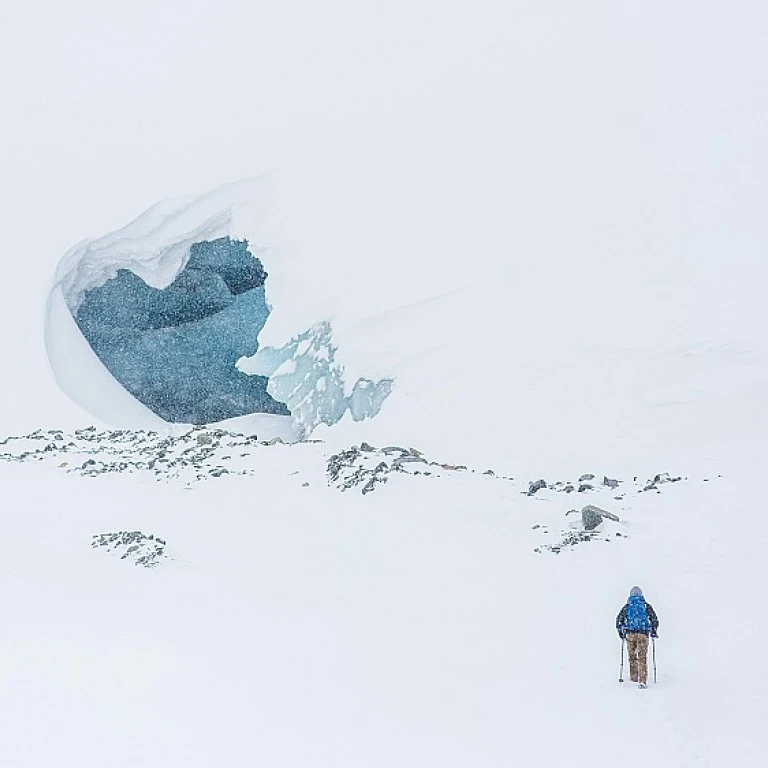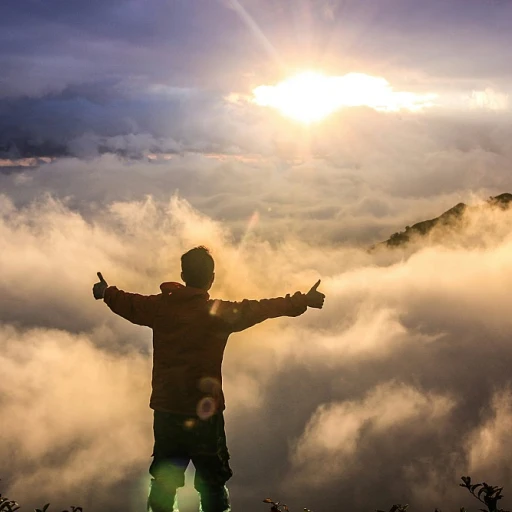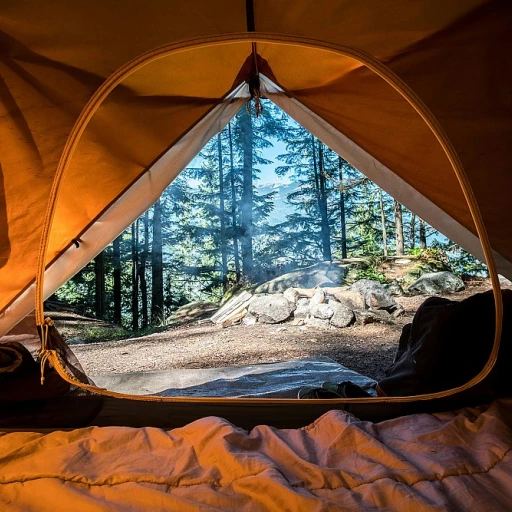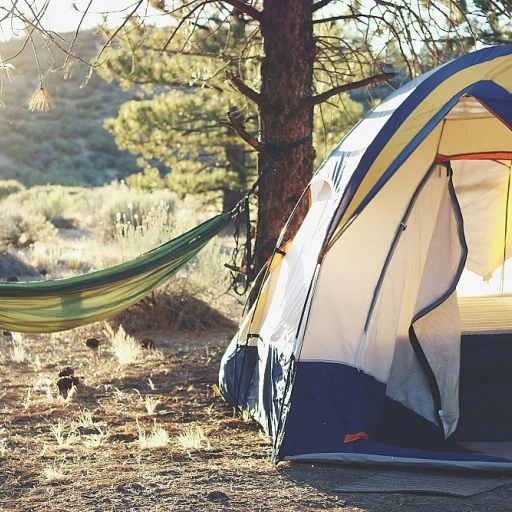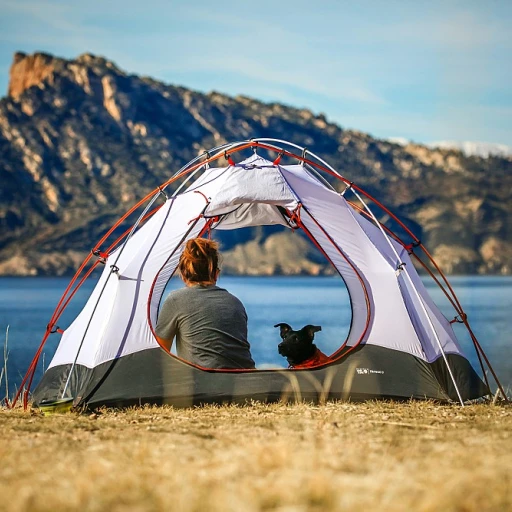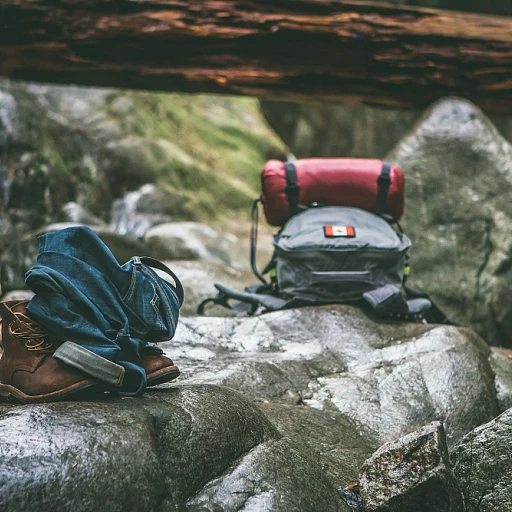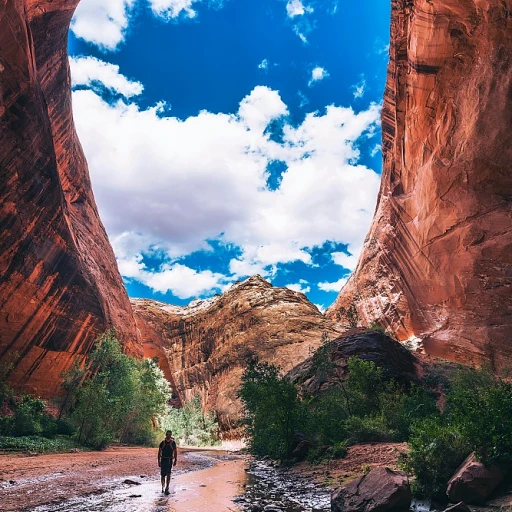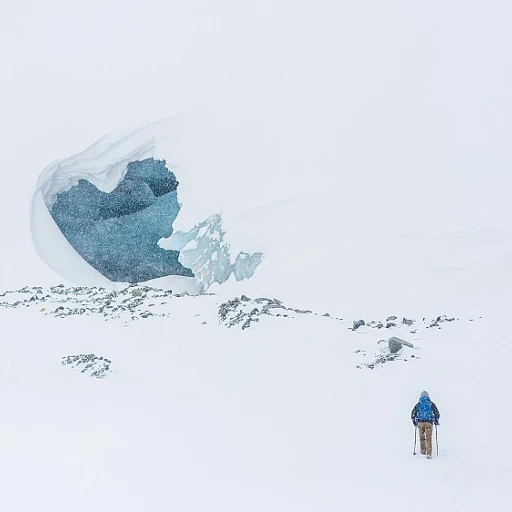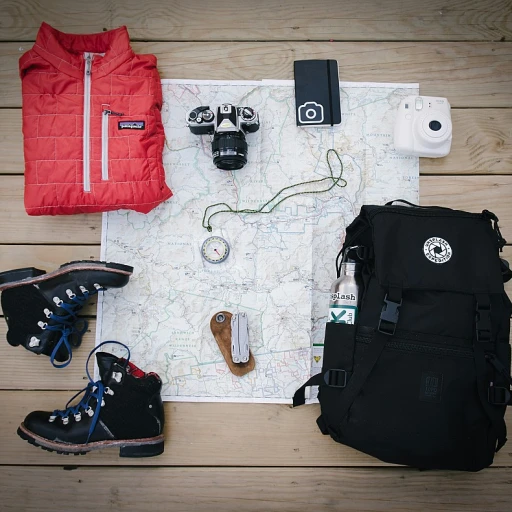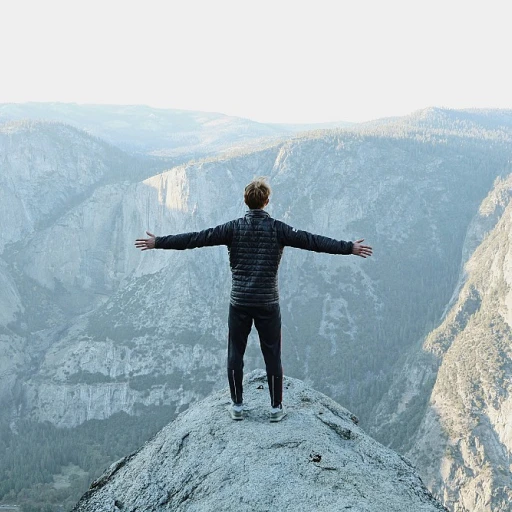
The allure of Longs Peak
Why longs peak stands out in colorado
Longs Peak, the jewel of Rocky Mountain National Park in Colorado, is one of the most sought-after climbing destinations for both beginners and seasoned hikers. Standing tall at 14,259 feet, Longs Peak isn't just another mountain—it's an icon. The challenge of reaching its summit has inspired many to set out on the hike of a lifetime.
What makes longs peak unique
Unlike other peaks in the Front Range, Longs offers a range of climbing experiences—from the exhilarating Keyhole Route to the rugged Boulder Field. The mountain's diverse trails provide something for everyone, be it a day hike or a more rigorous climbing endeavor. Not to mention, the breathtaking views of Chasm Lake and Mills Glacier as you ascend.
Historical significance
Longs Peak wasn't always on everybody's hiking list. Thanks to explorers like John Wesley Powell, interest in summiting Longs began to grow in the late 19th century. Now, it's one of the peaks that continually draws a massive number of hikers each year, making it a top contender among the top 10 hikes in Colorado.
Ecological and geological features
The mountain offers a mix of geological formations, from the rugged crags of the Diamond face to lush, verdant meadows. En route, hikers encounter an array of wildlife, including the occasional sightings of elk, marmots, and even black bears.
The social and community aspects of hiking longs peak
Hiking Longs Peak is more than just a physical challenge; it’s a community experience. Along the trail, you’re bound to meet fellow enthusiasts who share a love for the outdoors. Whether you're a solo hiker or part of a group, the camaraderie that develops among climbers is often one of the most rewarding parts of the journey.
Essential preparations for hiking Longs Peak
Gathering your gear
Embarking on a hike up Longs Peak requires meticulous planning. As anyone who's attempted the climb will tell you, the right gear makes all the difference. According to a 2021 report by the National Park Service, 60% of hiking injuries on Longs Peak were attributed to inadequate or inappropriate gear. So, what exactly should you pack?A sturdy pair of hiking boots is essential. You'll be traversing rocky terrain, particularly in areas like the Boulder Field, and the Keyhole Route demands shoes with excellent grip and ankle support. It is worth investing in high-quality boots, as they are your lifeline on the mountain. The Colorado Mountain Club strongly advises boots that are well-broken in prior to the hike.Layering is key when dressing for the climb. The temperature can fluctuate drastically—the trailhead might be warm while the summit can be freezing with wind chills. The National Park Service recommends packing moisture-wicking base layers, an insulating middle layer, and a waterproof outer shell. Remember, someone's comfort can be your best friend when the wind picks up or if you’re caught in an unexpected downpour.Nutrition and hydration
Keeping your energy levels up is a must on this strenuous day hike. Dietitian and hiking enthusiast Karen Smith emphasizes the importance of consuming high-energy snacks. Items like trail mix, energy bars, jerky, and dried fruit provide the necessary calories to fuel your adventure. She also notes the value of starting with a hearty breakfast that includes proteins and carbs.Hydration cannot be overstated. A 2018 study by the Wilderness Medical Society highlighted that 75% of hikers on Longs Peak did not carry sufficient water, leading to dehydration and, in severe cases, heat stroke. Aim to carry at least three liters per person, and consider a hydration pack for easy access. Don't forget to sip frequently, rather than waiting until you're thirsty.Training and physical preparation
Longs Peak's elevation gain of over 5,000 feet to its 14,259-foot summit is not for the faint-hearted. Training beforehand is crucial for a successful and enjoyable climb. Dr. Scott Johnston, author of "Training for the Uphill Athlete," suggests a regimen that includes aerobic conditioning, strength training, and, if possible, acclimatization hikes at higher elevations. Hiking in similar conditions helps your body get used to the demands you'll face.If you’re looking for good preparatory hikes, grays peak and pikes peak offer trails with moderate elevations that can condition your legs and lungs. Additionally, engaging in cross-training activities such as cycling, running, or swimming can build the endurance needed for a full-day hike.Mental preparation
Psychological readiness is just as important as physical readiness. Brenda Piper, a seasoned mountaineer, says that mental fortitude often trumps physical strength on tough hikes like Longs Peak. Visualizing the climb, setting small milestones, and maintaining a positive attitude can push you forward even when the going gets tough.Joining a hiking group or finding a hiking buddy can provide moral support. Longs Peak can be a test of will, especially near the summit where the terrain turns challenging, and having camaraderie can make a big difference.The Keyhole Route: the classic approach
Why the Keyhole Route is a Must-Try
The Keyhole Route on Longs Peak is undoubtedly one of the most iconic climbing experiences in Rocky Mountain National Park. The route is named after the unique Keyhole formation, a prominent notch in the rock ridge near the summit of Longs Peak. This route offers breathtaking views and an exhilarating challenge that beckons hikers from all over the world.
Historical Significance and Popularity
The Keyhole Route has a rich history dating back to its first recorded climb in 1868 by John Wesley Powell. Over the years, it has transformed from a path for the daring few into a beloved journey for many. Around 40-50% of all hikers attempting to summit Longs Peak choose the Keyhole Route, making it a primary draw within the Rocky Mountain National Park (National Park Service).
What to Expect on the Keyhole Route
Your adventure begins at the Longs Peak Trailhead, located at 9,405 feet. From there, you'll ascend through the picturesque pine and spruce forests. As you gain elevation, the treeline gives way to alpine tundra and eventually to rugged rocks as you approach Boulder Field. The Boulder Field is a visually striking landscape of large, scattered boulders that you’ll navigate to reach the shelter known as the Keyhole.
Crossing through the actual Keyhole is a significant milestone on the route. Upon passing, you enter a rocky ledge that requires careful footing. The trail continues with steep inclines and challenging terrain, leading up to the Homestretch – a near-vertical climb that is the final push to Longs Peak's summit, often feeling like the climax of the journey.
Expert Tips for Navigating the Route
According to expert mountaineer Gerry Roach, author of “Colorado's Fourteeners,” having proper gear is critical. “Good footwear, such as sturdy hiking boots, and weather-appropriate clothing can make or break your Keyhole Route experience,” he suggests. Additionally, many hikers recommend starting as early as 2 a.m. to avoid afternoon thunderstorms, a common occurrence in the area.
Safety and Challenges
The Keyhole Route is considered a Class 3 climb, meaning it involves some exposure and scrambling, but no technical rope work. Nonetheless, it is not for the faint of heart. The National Park Service estimates that around over 60% of attempted summits via the route may be turned back due to weather or personal limitations. Safety gear, adequate hydration, and preparation for changing conditions are vital. Always check the long-term and short-term weather forecasts before heading out.
Feeling Inspired?
If you're planning to tackle the Keyhole Route or any other thrilling hike in Colorado, make sure to visit our comprehensive guide on preparing for challenging hikes. Happy trails!
Navigating the Boulder Field
Boulder field challenges
The Boulder Field on Longs Peak is a notorious section that every hiker should be prepared for. This area is a sprawling, rocky maze that demands both physical and mental prowess. Covering approximately three-quarters of a mile, it showcases vast stretches of boulders, some of which are as large as small cars. The elevation here is around 12,400 feet, adding to the already strenuous climb.
Be mindful of potential trip hazards as uneven terrain and loose rocks can be tricky to navigate. An essential preparation for tackling the Boulder Field is ensuring you have the right footwear. Boots with solid ankle support are crucial. Footwear choices can make or break your experience, so take your time to select wisely.
Pace and patience
Many hikers, driven by the summit fever, tend to rush. But as climbers frequently say, steady and slow wins the race. Pausing occasionally, not just for breath but to assess the next few steps, can prevent mishaps. The Boulder Field is where many accidents occur. Remember, safety is a foremost priority. Using trekking poles can help maintain balance in this rugged section.
Spotting the cairns
Guiding cairns (small man-made piles of stones) are crucial navigational aids in the Boulder Field. These little rock towers mark the trail, especially helpful when visibility drops due to fog or other weather factors. Keeping your eyes on these markers will ensure you stay on the right path. As mentioned in the weather considerations, conditions can quickly change, making these cairns indispensable.
Mental fortitude
Aside from physical preparedness, mental attitude plays a pivotal role when tackling the Boulder Field. Stay calm and focused, especially when fatigue starts to set in. Remember stories from other hikers and their experiences here. Personal accounts often mention the sense of accomplishment felt upon conquering this daunting section, so draw inspiration from that. Conversations with experienced hikers and forums can provide invaluable tips on navigating this tricky part of the trail.
For additional mountaineering inspiration, check out the top hikes in Colorado to expand your hiking adventures.
Weather considerations and safety
Understanding Colorado weather
When it comes to the weather on Longs Peak, unpredictability is the norm. It's not just about checking the forecast the night before; you need to understand the patterns. According to the National Park Service, afternoon thunderstorms are common in the summer, and can appear without much warning. These storms can bring sudden temperature drops, heavy rain, and lightning strikes, which are a major hazard at high altitudes.
Longs Peak has an elevation of 14,259 feet. As you ascend, temperatures can decrease by about 3.5 degrees Fahrenheit for every 1,000 feet climbed. The summit can be 20-30 degrees colder than Estes Park below, even in July or August.
Seasonal considerations
Climbing Longs Peak is a different story depending on the season. During winter months, snow and ice make for a significantly more challenging and dangerous climb. According to the National Park Service, only experienced mountaineers with appropriate gear should consider a winter ascent.
Spring and fall can also be tricky due to lingering snow and unexpected weather changes. The summer season, particularly from mid-July to early September, is generally the safest time to attempt the climb, although it's crucial to be off the summit before early afternoon to avoid the frequent thunderstorms.
Monitoring real-time conditions
Before setting out for Longs Peak, check real-time weather updates and conditions. Websites like NOAA National Weather Service or local stations provide the most accurate forecasts. Also, don’t forget to stop by the Longs Peak Ranger Station to get the latest trail and weather information firsthand.
Essential safety precautions
Safety should always come first. Wear appropriate layers to handle temperature changes, and always have waterproof gear. Bring a map, compass, and GPS device, as weather can quickly obscure trails. If a storm appears imminent, descend immediately; do not wait for it to pass as lightning can strike well before and after the peak of a storm.
Being prepared isn’t just about physical gear but about mental readiness. As renowned mountaineer Ed Viesturs famously said, “Getting to the top is optional. Getting down is mandatory.” Safety, awareness, and adaptability are crucial when tackling Longs Peak.
Alternative routes and experiences
More than the keyhole: alternate ways up longs peak
While the Keyhole Route is often the go-to for many hikers, there's more than one trail leading to the summit of Longs Peak. These alternative routes cater to different skill levels and preferences, offering unique challenges and stunning views.
The loft route: a more challenging ascent
The Loft Route, traversing through the Loft Gully, presents a more strenuous option for those seeking a bit more excitement. This path requires some technical climbing, making it suitable for experienced climbers looking for a less crowded experience compared to the Keyhole.
Paul Garrity, a seasoned mountaineer, notes, "The Loft Route offers dramatic scenery and a sense of solitude that's hard to find on the Keyhole Route during peak season." Generally, it takes about 12 to 15 hours to complete, so starting early is crucial.
The north face or cable route: for advanced climbers
The North Face, also known as the Cable Route, shifts the experience from trekking to technical climbing. This one is certainly not for beginners. Climbers will need to carry appropriate gear, including ropes and harnesses. This route is steep and can be icy, even during summer months.
A study conducted by Colorado Mountain Club in 2022 indicated that only 5% of Longs Peak climbers opt for the North Face Route due to its difficulty. However, it offers a direct path to the summit in about 8 to 10 hours.
Chasm view wall: for the elite and the brave
For the truly adventurous and technically skilled, the Chasm View Wall provides an exhilarating climb. This route, often associated with rock climbing, requires extensive preparation and experience. Climbers will encounter vertical sections that demand impeccable technique and physical strength.
Mike Anderson, an expert climber who has summited Longs Peak multiple times, said, "Chasm View Wall is as mental as it is physical. Few routes in Colorado offer such pure vertical climbing challenges." Generally, it takes 10 to 12 hours from base to peak, depending on skill and conditions.
Winter ascents: a whole new beast
For those who crave even more adventure, tackling Longs Peak in winter transforms the mountain into an arctic challenge. Ice climbing and snow-laden trails make it an entirely different beast. However, it also brings increased risks, including avalanches and extreme cold.
Data from the National Park Service shows that winter attempts constitute less than 1% of the total ascents due to the harsh conditions.
Despite the allure of these routes, safety should always come first. As Susan Howard, a ranger at Rocky Mountain National Park, advises, "Always inform someone about your plans, carry the right gear, and know your limits."
Interested in exploring more trails in Colorado? Check out the top 10 hikes in Colorado for more adventures.
Personal stories and expert insights
Real accounts from those who conquered Longs Peak
When it comes to tales of bravery and persistence, Longs Peak is a gold mine. Take, for instance, the story of Patricia Miller. A 45-year-old teacher from Denver, she tackled Longs when most would shy away. Patricia wasn't an experienced hiker, but she prepared herself by training every weekend for a year. She recalls, “Reaching the summit was the most emotionally rewarding experience of my life. The view at the top makes every ounce of effort worth it.” Her story has inspired many to try their luck on this challenging climb.
Experts weigh in: what you need to know
Dr. Lindsay McIntyre, a well-known environmental scientist from the University of Colorado, once hiked the Keyhole Route herself. She advises, “Understanding weather patterns is crucial. A sudden storm can transform a joyous hike into a dangerous situation.” Her insights don't just come from books; they've been tested on the rugged terrains of Longs.
Further validating these words of wisdom, studies from the National Park Service show that 30% of rescues in Rocky Mountain National Park are from Longs Peak. This fact alone underscores the need for proper planning and respect for the mountain’s unpredictable nature.
A seasoned climber’s perspective
Mark Sullivan, an experienced mountaineer based in Boulder, has ascended Longs Peak more than 20 times. His love for the mountain is palpable. Mark says, “Every climb is different because Longs Peak’s weather, routes, and conditions vary so much; that’s the beauty and the challenge of it.” According to Mark, the Keyhole Route is not the only gem on Longs Peak—he recommends trying the Loft Route for those with a penchant for less crowded paths.
More than just a hike
Each person’s interaction with Longs Peak is unique. Alex Turner, a local photographer, found solace in the mountain's majesty after losing his father. With his camera as his companion, Alex spent countless hours capturing the beauty of this iconic peak. He shared, “Longs Peak isn’t just a demanding hike; it's a place for reflection and personal growth.” For many like Alex, the mountain offers a space to heal and rediscover oneself.
These personal stories highlight the emotional and physical test posed by Longs Peak. Whether you’re an experienced hiker or a beginner, the stories of those who’ve gone before serve as guides and inspiration for your own adventure.
Longs Peak in the broader context
Longs Peak's role in mountaineering history
Longs Peak stands as a symbol of Colorado's rugged beauty and adventurous spirit. As one of the most sought-after fourteeners in the United States, it offers a challenging yet rewarding experience for climbers. The mountain has attracted legendary mountaineers such as Enos Mills, who is credited with the creation of Rocky Mountain National Park.
According to the National Park Service, approximately 15,000 people attempt to climb Longs Peak each year, with a success rate of around 50%. This high rate of turnout highlights the mountain's enduring appeal despite its difficulty.
Environmental impact and conservation
Hiking and climbing activities on Longs Peak must be balanced with conservation efforts to protect its unique ecosystem. The increased foot traffic has led to soil erosion and damage to fragile alpine vegetation. The National Park Service has implemented several measures to reduce the environmental impact, such as creating designated trails and educating hikers about Leave No Trace principles.
Dr. Reese Ferrie, an ecologist specializing in alpine environments, stated, "It's crucial to maintain the natural habitats while allowing people to enjoy these incredible landscapes."* Ensuring responsible hiking practices helps preserve Longs Peak for future generations of outdoor enthusiasts.
The cultural significance of Longs Peak
Beyond its physical challenges, Longs Peak holds cultural importance for local communities and indigenous peoples. The Arapaho tribe, for instance, has historical ties to the mountain and its surrounding areas. The peak is also a popular subject in local art, literature, and folklore.
In Estes Park, the gateway to Longs Peak, you'll find numerous references to the mountain in local businesses and events. The Longs Peak Scottish-Irish Highland Festival, held annually, celebrates the peak's majestic presence with traditional music, dance, and athletic competitions. This intersection of natural beauty and cultural heritage adds another layer to the experience of climbing Longs Peak.
Recent trends in alpine climbing
In recent years, there has been a notable shift towards more sustainable and minimalist approaches to mountaineering. Climbers are increasingly emphasizing lightweight gear and self-sufficiency to reduce their environmental footprint. This trend aligns with broader movements in outdoor recreation that prioritize conservation and sustainability.
Longs Peak's popularity has also seen a rise partly due to its prominence on social media platforms. Climbers share their exhilarating journeys, inspiring others to tackle the mountain. However, this digital exposure necessitates reinforcing safe and responsible climbing practices to ensure that all adventurers are well-prepared.
In summary, Longs Peak is more than just a mountain; it's a historical, cultural, and environmental landmark. By understanding and respecting its significance, hikers can contribute to its preservation and continue to enjoy its challenges and beauty for years to come.

